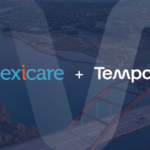
Since the No Surprises Act went into effect, payers and providers have struggled to keep up with certain provisions and many wonder if automation can fill the gaps.
Health Payer Intelligence | Kelsey Waddill | January 10, 2024 – Brian Marsella, president of Health Payment Systems (HPS) and Paymedix, was accustomed to the challenges of maintaining provider directories when he joined HPS and Paymedix in 2022. But two years into his tenure and two years after the No Surprises Act went into effect, it was clear the payer’s provider directory processes needed to change.
The No Surprises Act requires health plans to conduct an attestation process every 90 days to verify that their provider directories are correct. Additionally, whenever providers communicate a change affecting their directory data, the payer must make the correction within two days of receiving the provider’s notification.
HPS found itself in an untenable position, Marsella told HealthPayerIntelligence. Its 27,000 contracted physicians produced nearly 100,000 records and its more than 100 in-network hospitals produced around 8,000 location type records. Only four HPS employees managed these records as a part of their roles.
As a result, the payer found itself slipping behind, unable to rectify the updates and errors within the 48-hour turnaround time. Achieving the 90-day attestation timeframe was also a serious concern.
HPS’s experience is not an anomaly. More than eight out of ten entries in the five largest payers’ provider directories were inaccurate, according to a JAMA Open Network research letter.
Three of the main challenges for payers, when they try to comply with the No Surprises Act’s provider directory provisions, are the volume of staff they must dedicate to the task, the variety of ways that providers might send them new information, and the amount of inaccurate data they receive from providers.
Even for major payers like Cigna, where Marsella worked prior to joining HPS, the process poses challenges. These big companies may be able to dedicate hundreds of employees to this effort, but the sheer workforce volume alone cannot ensure the payer will receive accurate data from providers. Moreover, major payers may touch more markets adding more complications.
Ultimately, the stakeholder who suffers when these issues go unresolved is the member. Without accurate directory data, it is hard for members to know whether a provider is in-network and how to access care.
By 2023, HPS had achieved the 48-hour turnaround time for its directory changes. But the amount of outreach required for that feat was unsustainable. So, the payer turned to automation.
Marsella shared several factors that payers should consider when looking for a vendor to automate and streamline their provider directory attestation and updating processes.
First, the vendor should have a deep history with automation. This approach is perfect for executing mundane, repetitive tasks. It has proven useful for payers in processes like prior authorization, where one health plan found that automation reduced a nine-day approval timeframe to a single day.
Second, payers should look for a vendor that will meet them where they are. Due to the complex nature of this effort and the many variables at play, different payers may have very diverse experiences with this process. The right vendor will work to understand the payer’s current state and workflows to find seamless pathways to compliance.
Third, vendors should not only understand the payer side of the process but should have a good grasp of the provider side as well. A “middleman” entity is most effective when it can assemble a process that works for both parties involved. A vendor that understands its payer’s provider partners will be better able to identify and procure the right information in a way that preserves that partnership.
Fourth, Marsella recommended finding a vendor who not only gathers and cleans provider data but also displays it for the payer and can do so in a way that will make sense to members. Ultimately, members are the end users of provider directory data. Vendors involved in the directory update process should be able to build member interfaces that offer the information members need in an accessible format.
Finally, payers should seek out vendors that will stay on top of rule changes. Marsella predicted that the rules around provider directory updates will continue to evolve. For payers to keep up with the new requirements, their vendor partners must be highly aware of the regulatory space.
“My challenge to my team was, everything that’s non-value-generating should be turned over to the vendor because they’re going to be able to do it faster, more efficiently, and better than we can,” Marsella summarized.
“And then let’s try and find any ways that we can continue to enhance our relationship with the provider and their office staff to make sure that they understand the value that we bring to them as a network, and make sure that we’ve got all of the right information.”
HPS’s chosen vendor will develop an algorithm that takes the disparate data and file types and ensures that the payer has the appropriate information. This includes updates received by phone call or email. The vendor will also map this data to the right places in the provider directory.
Marsella expected the new vendor relationship would require certain changes to internal processes.
For example, the payer will focus more on communicating to providers that this is a “help me help you” situation. Although sending updated directory information can produce a higher administrative burden for providers, it also helps new patients find them. This is a key message that HPS will emphasize to its provider network as it introduces its new vendor partner.
The payer also needs to maintain its own internal database to pay providers. HPS will audit back and forth between the directory and the internal database to ensure the data is synced.
The payer will continue adapting its internal processes after the initial implementation phase. It will also tweak key performance indicators with its vendor as necessary.
But on the macro level, an individual payer’s automation efforts will not be enough. Marsella emphasized that real progress on provider directory accuracy will require industrywide changes and possibly new regulations. Major payers need to take steps to standardize provider directory content. And providers need to habitually send out a checklist to payers after mergers, integrations, or any other major changes that might affect directory information.
In the meantime, payers like HPS will continue adjusting workflows and taking on vendor partners to meet the regulatory requirements and members’ needs.
“What we want to make sure is at the end of the day we’re complying to the letter of the law with the NSA, but more importantly, we want to make sure that the member’s getting what they need. And so the accuracy and the quick resolution of anything that does come into play—those are going to be key to us as we move forward,” Marsella concluded.
Also featured on: Health Payer Intelligence


